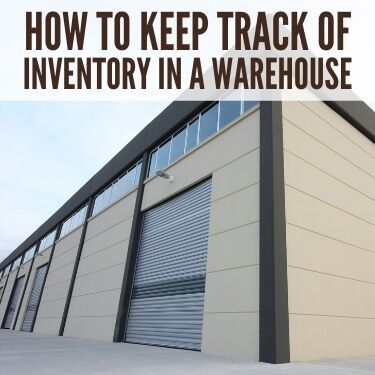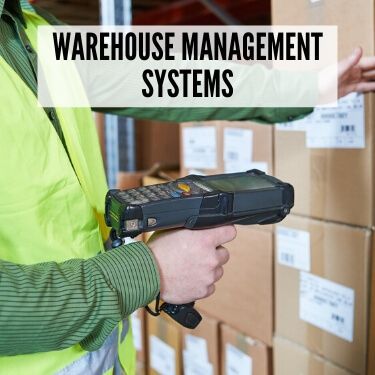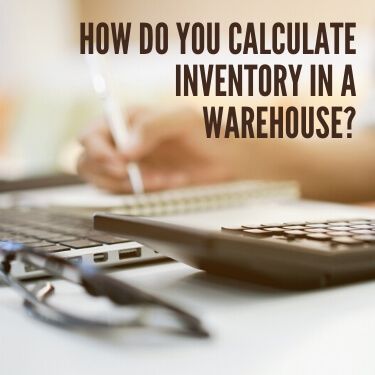
 Copy URL to Clipboard
Copy URL to Clipboard
Keeping track of inventory in a warehouse is a major task for all warehouse operators.. Large warehouses process thousands of orders each and every day which requires precise inventory accuracy.. Many distribution centers are still using paper to place orders and follow them through the supply chain process. However, paper is not always reliable for warehousing. It’s crucial to find the best way to manage a warehouse to keep customers satisfied.
How to keep track of inventory will vary for each warehouse, as most distribution centers have their own unique way of processing information. However, it is important to note that stacks of paper won’t be manageable with business growth. Warehouse management systems are advised for all companies to administer sectors of the supply chain process including inventory control. This is especially valuable for third-party logistics (3PL) warehouses that are thoroughly involved in the entire distribution process.
Table of Contents

Understanding different warehouses types can help strengthen your knowledge on how to store inventory. Each warehouse follows a unique procedure for counting and storing inventory, but some of the processes overlap. The best systems are developed from trial and error, standard procedures that are modified from learned mistakes create the ideal method for each warehouse.
While there is a good deal of correlation between public and third-party logistics warehouses, there are also distinct differences amongst the two. It is essential to note the dissimilarities when looking for a warehouse for your products. The largest differences between the two lie in the services offered.
With the amount of services they offer, supplies are constantly moving in and out of these warehouses. It is crucial for these centers to have advanced inventory management systems to keep track of stock levels.
3PL’s are continuing to expand, in recent years the industry brought in roughly 75 million dollars. Many fortune 100 companies depend on these services for their businesses, including:
Inventory is any product stored within a warehouse. While most businesses store their own branded inventory in its own company warehouse, third-party logistics warehouses store various products from multiple companies and brands. There are four basic inventory categories for each product shipped to a distribution center.
These various goods are stored in different areas in a warehouse and they must be separated in order to keep track of the inventory. Having a good organization structure of inventory makes it easier to track and count for visibility purposes.

The bottom line of warehouse functions relies on inventory levels. Customer retention and growth depends on how inventory is tracked. Customers and business owners like to know where their products are and where they are going. Maintaining data on inventory control is crucial, it ensures you will never run out of products, it shows trends in popular inventory items, and it helps to monitor costs.
Inventory should be tracked from the moment it is shipped to a warehouse until the point of sale. There are several ways to monitor inventory, but some of the best are:
If this number drops below the standard, the warehouse may not have enough in stock to send to customers. However, numbers constantly shift based on consumer demand making it essential to constantly track your inventory.
During the holiday months, for example, it is better to have extra product in stock in case of high demand. Stock controllers monitor these levels and will request reorders of items the warehouse is low on.
It is a good idea to enforce this method for all products including non-perishables. Most companies frequently change their branding or advertising on packaging. If they have certain promotions, redesign products for holidays or simply just change the overall look of a product. Making FIFO a habit ensures the shelves will always be stocked with the most current product.
Another reason physical sheets are recommended is to avoid the loss of data if the system crashes. Digital data could be completely compromised and all stock numbers would be erased if the computer or software crashed. It would be nearly impossible for a warehouse to unpreparedly count every inventory item and mistakes would be inevitable.
With the data history erased, warehouse managers would also lose the ability to compare any of the previous data with new data. While software is an advantage, always have a backup prepared.
However, it is not always reliable and this could cause a great deal of harm to the warehouse, consumers, and business owners. Inventory management software can also be very expensive. If used properly, this software tool could be beneficial to a warehouse. The best way to manage inventory is to have both software and physical notes on all products.
Scanning products in when they are initially received, scanning them throughout the warehouse process, and then again when they are being shipped to consumers allows for easy tracking of materials. All of the information collected through the scanning process is made available on apps for the warehousing staff or business owner.
This can reveal things like how much raw material is in stock, the price of inventory, if any products are on backorder, and more. Having an application is desirable for 3PL’s because they can easily share this information with customers to eliminate any worries.
Using inventory management tools increases the functionality of warehouses and could potentially increase profit margins. Companies who develop trust in your different types of warehosue storage systems and are able to monitor these systems for themselves through a digital dashboard will be more likely to continue storing their products in your warehouse
The most popular inventory management tools are stored in warehouse management systems. These software systems make it easier to track inventory in the cloud so it can be dispersed through multiple platforms. Warehouse management systems include some of the supply chain processes as well, which contributes to monitoring the entire distribution center more effectively.
Want to know about other forms of inventory management? Find out how decoupling inventory could work for your business.

A warehouse management system (WMS) is a method to keep track of all the functions within a warehouse. It is particularly important for third-party logistics warehouses to follow a detailed management system, as they usually offer more intricate services extending far beyond traditional warehousing. 3PL Warehouses must look for software that includes features like:
Most third-party logistics companies handle order fulfillment services, a process where these warehouses receive, pack and ship out automated orders on behalf of another company. Subscription boxes are a primary example of this service. Order fulfillment software makes the process much easier for picking and packing orders as it automatically prints labels when the orders are ready for processing.
The software also sorts through all of the inventory noting which products are to be included in the fulfillment order. It creates an interactive platform to help monitor the package in real-time. Using this system decreases the chance of human error and saves time by automating the orders.
Transportation software is also included in most 3PL’s warehouse management system, this gives business owners the opportunity to track their shipments. The software can even create automatic shipping labels once a shipment has been processed and monitor inbound receipts for the arrival of new products. Reverse logistics oftentimes creates chaos and this software helps monitor this process and makes returns much easier for the customer and the warehouse.
Billing can be extremely complex for most 3PL warehouses as they deal with consumers and business owners. Not only must customers have an easy to read platform to allow them to make changes directly to the bill if necessary, but these distribution centers must also have the ability to create unique bills for special orders. Most warehouses look for features that include:
3PL’s need to have the ability to manipulate on a per-customer basis because they are involved in various transactions from multiple customers.
Real-time data is mandatory for any logistics company, this is the primary feature third-party logistics companies look for in a software system. This enables customers who use these warehouses the ability to see their products in real-time on any device.
With this software, shippers are able to log in and determine exactly where its products are located. The online platform also signals whether or not the shipper needs to send out more materials. New warehouse management software has integrated real-time data as a standard because it simplifies processes for both warehouses and business owners.
Integrating data is important for third-party logistics warehouses, the data must be transferable across many platforms and locations. Some logistics companies begin tracking a product from the moment it’s sent to the warehouse and data must continue to be logged until it reaches the final destination.
At any given time, this data must be accessible to the logistics company, the manufacturer, and the intended customers. Having this dashboard available at all times will enhance the customer experience and help generate reports for the warehouse to analyze. Communication is a central part of the logistics process, but customers prefer having something tangible to observe their products.
Regardless of what kind of warehouse you manage, organization and accurate inventory counts are key to making processes run smoothly. The advancement of technology has shaped the way warehouse management systems function. There are various software systems for each distribution center to use however, systems should be selected on a per warehouse basis depending on the amount of inventory and number of services offered.

Whether using warehouse management software or not, it is crucial for companies to have a backup count of all inventory. This process is time-consuming but should be done at least twice a year to prevent excess inventory or a shortage of inventory, these outcomes could lead to serious problems. The more frequently inventory is counted, the better results you will get. The best way to calculate inventory is to follow a strict process:
While this is a long and intricate process it is extremely important to do this quickly, preferably in a day's work to move the warehouse back to normal operation. If necessary, make changes to your warehouse procedures each time you complete the process.

Monitoring inventory is critical for all warehouses, but especially for third-party logistics centers. A shortage of inventory can lead to backorders or worse, the customer not receiving the product at all. Excess inventory can result in lost profits as you may have to throw out expired products or products with old labels. There are several challenges connected to inventory management, including:

Overcoming inventory challenges is difficult because there is not a single solution for every problem. Resolving issues is different for each warehouse, especially for public versus third-party logistics warehouses. Some common suggestions to solving inventory management issues are:
Organization is important for each part of the supply chain process but it’s particularly important when tracking inventory. Creating a floor plan to sector off where certain goods should be placed is the first step to organizing a warehouse.
Once everything is placed in the right area of the warehouse ensure that each item, rack, and shelf is labeled. Provide racks and shelves to optimize storage and space utilization. After all of these procedures are verified, schedule routine check-ins to guarantee your warehouse stays organized.
In regards to organization, monitoring the entire supply chain is important to improving inventory accuracy as well. If your warehouse is organized you should have diverted areas for incoming and outgoing shipments. However, these products should be tracked from the moment they leave the shipper’s hand until the final destination. This helps not only keep track of your inventory but also satisfies the customer.
To make tracking easier, all warehouses should invest in an efficient software program. There are a wide array of warehouse management systems available, but testing a few and deciding which is best for your warehouse will optimize your performance. Using software ensures optimal data is pulled from the warehouse, making graphs and charts available at the touch of a finger.
Uploading data into a software system makes it easier to evaluate numbers, however, it is extremely important to back up all data that is entered. Saving files of your data on multiple platforms can help back up your data, but also printing the information or simply writing it on a piece of paper ensures your data will always be available to you.
Lastly, having multiple warehouses available for storage can help your company with warehouse inventory. Locations around the state can help get products to your consumer much quicker and it can help with storing items specific to a certain region. Having warehouses in other countries help reach an even larger consumer population and organize more of your products.
Again, these processes are different for every warehouse, but these are some of the most popular suggestions to keep warehouses running smoothly. Keeping track of inventory can be difficult, finding what works best for your warehouse is the best solution to any of your problems.
Tracking inventory in a warehouse is mandatory for the success of a logistics company. Not knowing what you have in stock or having an incorrect count of inventory can harm your business and the relationship with your customers. Tracking inventory is the soul of a warehouse, without it, the business will ultimately fail.
Warehouses begin to fill up quickly, and before you know it your products are overflowing and the warehouse becomes unmanageable. Working with a third-party logistics company can help your business perform better.
R+L Global Logistics will take care of the difficult processes for you. We can handle every step in the supply chain and provide you with a tracking number to follow us through the process. This will essentially provide your company with another warehouse but without all of the extra work and costs.
We incorporate advanced technology into our warehousing strategies to ensure your warehouse is operating efficiently. We have locations nationwide if you’re looking for a region-specific warehouse. Some of our best-known features are:
We also offer order fulfillment, E-commerce fulfillment, packing and repacking services, and reverse logistics. You will receive a real-time dashboard to follow your products in each step.
How to keep track of inventory is a question best answered by an R+L Global Logistics consultant who will organize the entire process for you. Contact one of our customer service specialists at 866-989-3082 and they will make your needs a priority. They will help you get a quote for fulfillment and distribution. We will take the stress of managing a warehouse from your hands to allow more time for you to focus on business productivity.
